1 of 8
Downloaded 45 times

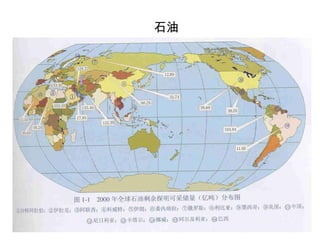
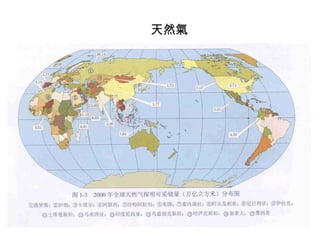
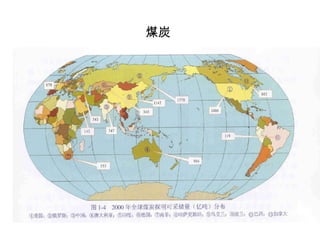
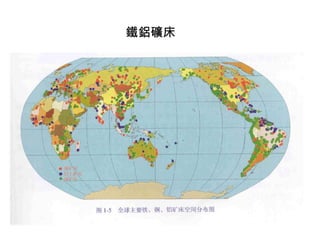
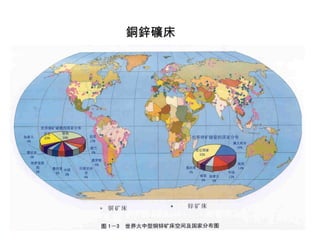
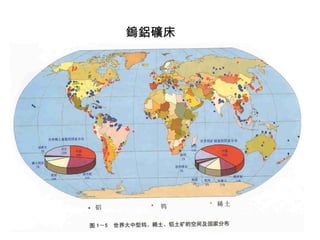
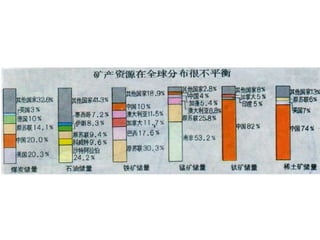
Ad
Recommended
Geostrophic Wind and Gradient Wind
Geostrophic Wind and Gradient WindPraveen Kumar Singh
?
The document discusses geostrophic wind and gradient wind. It explains that geostrophic wind expresses the magnitude of wind speed as a function of the geopotential height gradient on a constant pressure surface. Geostrophic winds exist where there are no frictional forces and isobars are straight. However, isobars are usually curved, so the winds are in gradient wind balance rather than true geostrophic balance. Gradient wind takes into account the curvature of isobars.Multiple choice questions
Multiple choice questionsKennyboo Brown
?
1) Multiple choice questions about fluid flow, river processes, and drainage patterns are presented.
2) Questions cover topics like laminar vs turbulent flow, sediment transport as bed load vs suspended load, river landforms, and factors that influence river channel patterns.
3) The document tests understanding of fundamental river and drainage system concepts.Nuclear waste disposal and its geological importance
Nuclear waste disposal and its geological importanceParth Pandya
?
The document discusses nuclear waste disposal and its geological importance. It describes the different types of nuclear waste - high, intermediate, and low level waste. It explains how waste is produced and stored. The key disposal methods discussed are deep geological disposal for high level waste, near-surface disposal for low level waste, and sulfide sponge and Notre Dame Thorium Borate-1 which can remove radionuclides like strontium-90 and technetium from nuclear waste. Ocean dumping was also mentioned but is now banned in most countries.Class 10, Stable isotopes
Class 10, Stable isotopesScott St. George
?
This document discusses stable isotopes of oxygen, specifically O16 and O18. Stable isotopes have the same chemical properties but different atomic masses. During evaporation and condensation, O18 fractionates from O16, leaving precipitation and ice "depleted" in O18 compared to ocean water. The ratio of O18/O16 in samples is used to infer past climate conditions, as warmer temperatures cause greater fractionation, resulting in more negative δO18 values in precipitation under wetter and cooler conditions. Proxies like ice cores and speleothems preserve stable isotope records that can reveal how climates differed in the past.ALUMINIUM AND COPPER
ALUMINIUM AND COPPERThomas Chinnappan
?
This document provides information on the mineralogy of aluminium and copper. It discusses that the chief source of aluminium is bauxite, and lists other aluminium minerals associated with bauxite like diaspora, boehmite, and gibbsite. Bauxite deposits are described as occurring as blankets, interstratified beds, pockets in limestone, and transported deposits. Information is also provided on the geological distribution of aluminium deposits in India. Uses of aluminium and its alloys in household utensils, aircraft construction, and more are outlined. The document then discusses the main copper ore minerals and their compositions. Modes of copper ore occurrence and origins are described. Finally, geological distributions of copper deposits inHydraulic conductivity( Darcy's law)
Hydraulic conductivity( Darcy's law)Ravi Kant Sahu
?
The document discusses hydraulic conductivity, which measures the ability of a material like soil or rock to transmit fluids through pores and fractures under an applied hydraulic gradient. It describes hydraulic conductivity as being important for calculating groundwater movement rates and outlines experimental and empirical methods for determining it in the field or laboratory, such as constant head tests, falling head tests, or correlations with soil properties. Hydraulic conductivity is the constant in Darcy's Law and is defined as the volume of water that will move through a porous medium per unit time under a unit hydraulic gradient through a unit area measured perpendicular to flow.Environment modelling
Environment modellingMansi Rastogi
?
Environmental systems are complex arrangements of interacting biological, physical, chemical, social and economic components within the Earth's environment. They can include systems like the atmosphere, oceans, and populations of plants and animals. Models are used to study environmental systems and can take various forms from simple empirical models to complex process-based models. Environmental systems generally have four main features - they involve complex nonlinear interactions; their characteristics vary greatly over spatial and temporal scales; these scales are often incompatible between components; and many processes are unobservable. The key types of environmental systems are hydrological, ecological and climatic systems.Hydrothermal deposits by VARINDRA
Hydrothermal deposits by VARINDRAVarindra Suiwal
?
This document discusses hydrothermal fluids and hydrothermal ore deposits. It begins by describing the different types of fluids found in the Earth's crust, including sea water, meteoric water, connate water, metamorphic water, and mixtures. For hydrothermal deposits to form, these fluids need to circulate through the crust to dissolve and transport metals. Common hydrothermal deposit types include veins and cavity fillings. Veins can be fissure, ladder, or gash veins and cavity fillings include saddle reefs. Metal solubility in hydrothermal fluids is controlled by factors like temperature, pH, and ligand complexes. Precipitation occurs when solubility decreases, such as due to changes in fluid composition or physical properties likeWeathering and erosion
Weathering and erosionAmmadkhan69
?
The document discusses different types of weathering and erosion processes that break down and transport earth materials. It describes mechanical weathering which breaks rocks into smaller pieces without chemical change through processes like frost wedging and exfoliation. Chemical weathering alters the composition of rocks through dissolution, hydrolysis and oxidation reactions aided by water, oxygen and living organisms. The document also outlines various agents of erosion like water, wind, glaciers and gravity that transport eroded sediments from their source locations.1586413913GEY_414_Diagenesis.pptx
1586413913GEY_414_Diagenesis.pptxMonuKumar183095
?
Diagenesis and lithification are processes that transform sediments into sedimentary rock. Diagenesis involves chemical, physical, and biological changes in sediments after deposition, including compaction and cementation. As sediments are buried, compaction expels water and cementation occurs when minerals precipitate between sediment grains, binding them together. Authigenesis generates minerals within sediments, while neomorphism involves recrystallization and inversion that alter mineral structures through replacement and changes in polymorphs in response to temperature and pressure changes.The Geochemistry of Uranium
The Geochemistry of UraniumASPhoenix
?
The document discusses the geochemical properties and cycles of uranium, emphasizing its isotopes and their relevance in various geological and environmental processes. It highlights the significance of oxidation states in determining uranium's solubility and transport within natural waters, as well as the importance of isotope geochemistry in environmental science. The exogenous and endogenous cycles of uranium are examined, detailing processes such as weathering, erosion, and sedimentation, with implications for resource management and environmental monitoring.FOLIATION AND LINEATION.pptx
FOLIATION AND LINEATION.pptxKavya Mol K S
?
- Foliations are planar fabrics in rocks that form sheets or layers. They include bedding, cleavage, schistosity, and gneissosity.
- Lineations are linear structural features in rocks that result from the parallel alignment of elongate minerals, fossils, or other linear features. They include stretched pebbles, intersection lineations, and slickensides.
- Foliations and lineations can be primary (formed during rock formation) or secondary (formed by deformation after rock formation). Secondary fabrics provide important clues about a rock's deformation history.Manganese nodules
Manganese nodulesGOPAL JI GUPTA
?
This document summarizes information about manganese nodules found on the deep ocean floor. Manganese nodules form over millions of years through the precipitation of manganese and iron oxides around a nucleus. In addition to manganese and iron, they contain valuable metals like nickel, copper, and cobalt. Two main theories explain their formation: hydrogenous precipitation from seawater or diagenetic remobilization from sediments. India has a program to explore extracting polymetallic nodules from its allocated area in the Central Indian Ocean Basin to obtain metals like nickel, copper, and cobalt.morphometry of drainage basin.pptx
morphometry of drainage basin.pptxsoja5
?
The document discusses morphometric analysis of drainage basins. It describes how drainage basins can be analyzed based on their linear, aerial, and relief aspects. Linear aspects include stream order, length, and bifurcation ratio. Aerial aspects include basin area, shape, and drainage density. Relief aspects examine the relationship between area, altitude, and slope. Morphometric analysis of drainage basin parameters provides insight into the physical characteristics and evolution of the landforms.Types of coastal protection
Types of coastal protectionNishay Patel
?
There are several types of coastal protection measures that can be used to reduce erosion. Hard engineering options like groynes, gabion cages, revetments, seawalls, and rip rap absorb wave energy through rigid structures. Groynes interrupt water flow perpendicular to the coast to limit sediment loss. Gabion cages are stacked rock-filled wire cages that act as temporary barriers. Revetments are sloped stone or wood structures that absorb wave energy. Seawalls are massive vertical walls that deflect waves. Rip rap is rock or concrete rubble that minimizes erosion. Beach replenishment involves adding new sediment and is considered soft engineering since it has a more natural appearance and fits better within the environment.Engineering Geology Unit 3.pdf
Engineering Geology Unit 3.pdfAditya Engineering College
?
The document outlines a course on structural geology for civil engineering students, covering essential topics such as outcrop, strike and dip, types of folding and faulting, and the significance of these geological structures. Students will learn to identify secondary rock structures and understand their formation mechanisms, as well as the economic importance of structural geology in locating natural resources. The course also explores the impact of geological structures on civil engineering and construction practices.SKARN DEPOSITS
SKARN DEPOSITSVICTOR OBI
?
The document discusses skarn deposits, which are metallic deposits associated with skarn rocks formed by the chemical alteration of carbonate rocks like dolostone and limestone. It defines skarn and its classifications, discusses associated mineral deposits, and highlights potential occurrences in Nigeria. Specifically, it notes that the Younger Granites Complex and marble-bearing schist belts may host skarn occurrences in Nigeria rich in iron, copper, gold, and molybdenum deposits. The document also presents a case study of the Antamina copper-zinc skarn deposit in Peru to illustrate deposit geology and mineralization.Introduction to Sedimentary Rocks
Introduction to Sedimentary RocksWilliam W. Little
?
Sedimentary rocks form through the accumulation and lithification of sediments. Sediments are produced through the weathering and erosion of existing rocks. Once transported, sediments are deposited in layers and compacted over time into sedimentary rock. Sedimentary rocks can be classified based on their composition (e.g. siliciclastic rocks like sandstone form from clastic particles) and texture (e.g. grain size, sorting, rounding influence the rock type). Sedimentary structures provide clues about the depositional environment.68125 engineering geology eeg 341
68125 engineering geology eeg 341?????? ???????
?
This document provides information about an engineering geology course taught at King Abdulaziz University. The course covers engineering geological considerations, soil and rock classification systems, engineering geological maps and their applications, conducting engineering geological studies and writing reports. It lists prerequisite courses, course objectives, general references, assessment scheme and expected learning outcomes. The course aims to train students to describe soils and rocks for engineering purposes and understand key engineering geology concepts and applications.Mineral resources
Mineral resources samkhan166
?
This document discusses mineral resources, which are naturally occurring inorganic solids that are finite and non-renewable. It describes the different types of mineral resources including fuel minerals like coal and oil, and metallic and nonmetallic minerals. Examples are provided of major mineral resources in India like coal, iron ore, bauxite, and copper. The environmental impacts of mineral extraction are also summarized, such as land degradation, water and air pollution, and occupational health hazards from mining activities.Seawater and its properties
Seawater and its propertiesProf. A.Balasubramanian
?
The document discusses the hydrosphere, highlighting various properties of water, including its types, quality, and the impact of salinity on marine life. It details the physical, chemical, and biological characteristics of seawater, including its composition, how salinity varies, and how these factors influence marine ecosystems. Additionally, it explains the processes of water circulation, temperature distribution, and productivity within ocean waters.Ground water exploration
Ground water explorationHemanthKumar1131
?
This document discusses methods for groundwater exploration, including the lithological method. It begins with an introduction about groundwater and the need to explore new sources as existing shallow sources are depleted. The objectives of groundwater exploration are to identify locations where it is available through regional and detailed surveys. Surface exploration methods are described, including the lithological method of studying rock characteristics. Key concepts like porosity, permeability, lineaments, faults and joints are also explained in the context of understanding subsurface groundwater distribution. The conclusion states that lithological analysis is a basic first step to aid other exploration methods.Thesis BHU_Samiur Rahman Khan_Geologist
Thesis BHU_Samiur Rahman Khan_GeologistSamiur Khan
?
This document summarizes a project dissertation on facies characterization of clastic reservoirs in the Lower Goru and Pariwar formations in the Jaisalmer Basin in Rajasthan, India. The project involved core analysis, thin section petrography, x-ray diffraction, and scanning electron microscopy studies of cores from one well in the basin. The objectives were to characterize the facies, identify cyclic deposits, interpret the depositional environments, and select samples for detailed mineralogical analysis. Literature on the evolution, structure, and lithostratigraphy of the Jaisalmer Basin is also reviewed to provide geological context for the facies study.VMS_Deposit.pdf
VMS_Deposit.pdfBibek Chatterjee
?
Volcanogenic massive sulphide (VMS) deposits are polymetallic formations occurring near the seafloor in submarine volcanic settings, driven by hydrothermal convection from metal-enriched fluids. They display a characteristic metal zonation, with varied compositions and alteration types, classified into groups based on ore composition and formation environment. Exploration strategies for VMS deposits include geological mapping, geochemical analysis, and geophysical surveys to locate promising geological structures and anomalies.Sediments transportation
Sediments transportationNaresh Mehta
?
Sediment transportation is an important process in estuary ecology. Sediment sources include land clearing, road building, in-stream disturbances, and other human activities. Sediment sizes range from clay to gravel and affect transport mechanisms. Cohesionless sediments like sand are transported as bedload or in suspension, forming bed features. Finer sediments exhibit cohesion, affecting transport. Sedimentation impacts flora and fauna by increasing turbidity, smothering habitats, and altering water chemistry. Actions to reduce sedimentation include stabilizing lands, maintaining vegetation, and managing runoff.Groundwater occurrence, Rock properties affecting groundwater, Soil classific...
Groundwater occurrence, Rock properties affecting groundwater, Soil classific...Naresh Kumar
?
The document discusses groundwater occurrence, emphasizing its subsurface distribution and the role of geological formations in its hydrology. It outlines different types of groundwater, such as connate, juvenile, metamorphic, and magmatic water, and introduces various aquifer classifications. Additionally, it examines the vertical distribution of groundwater between zones of aeration and saturation, explaining their characteristics and importance in water retention.IRON ORE DEPOSITS IN EGYPT
IRON ORE DEPOSITS IN EGYPT Geology Department, Faculty of Science, Tanta University
?
The document outlines Lecture 9 on Egyptian iron ore deposits, focusing on the sedimentary iron ore deposits and banded iron formations found primarily in Sinai and the Western Desert. It details specific locations, characteristics, and economic significance of various iron ore deposits, such as the Gabala Halal, Aswan, and Bahariya deposits. Additionally, it discusses the geological settings, average compositions, and potential mining aspects of these deposits.98学年度欧洲(叁)
98学年度欧洲(叁)mcvsgeo
?
文档讨论了欧洲的农业和工业发展,介绍了传统农业的四个区域及其问题,以及共同农业政策的利弊。在工业部分,强调了东欧国家对西欧的经济互补和传统工业区的转型,特别是如何通过团队合作应对国际竞争。此外,文档还探讨了未来产业的发展前景与挑战,包括高福利和市场监管对新兴产业的影响。98学年度欧洲(二)
98学年度欧洲(二)mcvsgeo
?
本章节探讨了欧盟的经济意义,包括其作為全球最大贸易体的角色及贸易壁垒的挑战,并强调了区域间的发展差异及其解决方案,如专案补助和边界合作区。欧盟推动的改革旨在减少核心与边陲区之间的经济差距并提升整体经济稳定。文中特别提到新成员国的加入对於欧盟内部政策的影响,以及针对农业补贴和贸易政策的调整。More Related Content
What's hot (20)
Weathering and erosion
Weathering and erosionAmmadkhan69
?
The document discusses different types of weathering and erosion processes that break down and transport earth materials. It describes mechanical weathering which breaks rocks into smaller pieces without chemical change through processes like frost wedging and exfoliation. Chemical weathering alters the composition of rocks through dissolution, hydrolysis and oxidation reactions aided by water, oxygen and living organisms. The document also outlines various agents of erosion like water, wind, glaciers and gravity that transport eroded sediments from their source locations.1586413913GEY_414_Diagenesis.pptx
1586413913GEY_414_Diagenesis.pptxMonuKumar183095
?
Diagenesis and lithification are processes that transform sediments into sedimentary rock. Diagenesis involves chemical, physical, and biological changes in sediments after deposition, including compaction and cementation. As sediments are buried, compaction expels water and cementation occurs when minerals precipitate between sediment grains, binding them together. Authigenesis generates minerals within sediments, while neomorphism involves recrystallization and inversion that alter mineral structures through replacement and changes in polymorphs in response to temperature and pressure changes.The Geochemistry of Uranium
The Geochemistry of UraniumASPhoenix
?
The document discusses the geochemical properties and cycles of uranium, emphasizing its isotopes and their relevance in various geological and environmental processes. It highlights the significance of oxidation states in determining uranium's solubility and transport within natural waters, as well as the importance of isotope geochemistry in environmental science. The exogenous and endogenous cycles of uranium are examined, detailing processes such as weathering, erosion, and sedimentation, with implications for resource management and environmental monitoring.FOLIATION AND LINEATION.pptx
FOLIATION AND LINEATION.pptxKavya Mol K S
?
- Foliations are planar fabrics in rocks that form sheets or layers. They include bedding, cleavage, schistosity, and gneissosity.
- Lineations are linear structural features in rocks that result from the parallel alignment of elongate minerals, fossils, or other linear features. They include stretched pebbles, intersection lineations, and slickensides.
- Foliations and lineations can be primary (formed during rock formation) or secondary (formed by deformation after rock formation). Secondary fabrics provide important clues about a rock's deformation history.Manganese nodules
Manganese nodulesGOPAL JI GUPTA
?
This document summarizes information about manganese nodules found on the deep ocean floor. Manganese nodules form over millions of years through the precipitation of manganese and iron oxides around a nucleus. In addition to manganese and iron, they contain valuable metals like nickel, copper, and cobalt. Two main theories explain their formation: hydrogenous precipitation from seawater or diagenetic remobilization from sediments. India has a program to explore extracting polymetallic nodules from its allocated area in the Central Indian Ocean Basin to obtain metals like nickel, copper, and cobalt.morphometry of drainage basin.pptx
morphometry of drainage basin.pptxsoja5
?
The document discusses morphometric analysis of drainage basins. It describes how drainage basins can be analyzed based on their linear, aerial, and relief aspects. Linear aspects include stream order, length, and bifurcation ratio. Aerial aspects include basin area, shape, and drainage density. Relief aspects examine the relationship between area, altitude, and slope. Morphometric analysis of drainage basin parameters provides insight into the physical characteristics and evolution of the landforms.Types of coastal protection
Types of coastal protectionNishay Patel
?
There are several types of coastal protection measures that can be used to reduce erosion. Hard engineering options like groynes, gabion cages, revetments, seawalls, and rip rap absorb wave energy through rigid structures. Groynes interrupt water flow perpendicular to the coast to limit sediment loss. Gabion cages are stacked rock-filled wire cages that act as temporary barriers. Revetments are sloped stone or wood structures that absorb wave energy. Seawalls are massive vertical walls that deflect waves. Rip rap is rock or concrete rubble that minimizes erosion. Beach replenishment involves adding new sediment and is considered soft engineering since it has a more natural appearance and fits better within the environment.Engineering Geology Unit 3.pdf
Engineering Geology Unit 3.pdfAditya Engineering College
?
The document outlines a course on structural geology for civil engineering students, covering essential topics such as outcrop, strike and dip, types of folding and faulting, and the significance of these geological structures. Students will learn to identify secondary rock structures and understand their formation mechanisms, as well as the economic importance of structural geology in locating natural resources. The course also explores the impact of geological structures on civil engineering and construction practices.SKARN DEPOSITS
SKARN DEPOSITSVICTOR OBI
?
The document discusses skarn deposits, which are metallic deposits associated with skarn rocks formed by the chemical alteration of carbonate rocks like dolostone and limestone. It defines skarn and its classifications, discusses associated mineral deposits, and highlights potential occurrences in Nigeria. Specifically, it notes that the Younger Granites Complex and marble-bearing schist belts may host skarn occurrences in Nigeria rich in iron, copper, gold, and molybdenum deposits. The document also presents a case study of the Antamina copper-zinc skarn deposit in Peru to illustrate deposit geology and mineralization.Introduction to Sedimentary Rocks
Introduction to Sedimentary RocksWilliam W. Little
?
Sedimentary rocks form through the accumulation and lithification of sediments. Sediments are produced through the weathering and erosion of existing rocks. Once transported, sediments are deposited in layers and compacted over time into sedimentary rock. Sedimentary rocks can be classified based on their composition (e.g. siliciclastic rocks like sandstone form from clastic particles) and texture (e.g. grain size, sorting, rounding influence the rock type). Sedimentary structures provide clues about the depositional environment.68125 engineering geology eeg 341
68125 engineering geology eeg 341?????? ???????
?
This document provides information about an engineering geology course taught at King Abdulaziz University. The course covers engineering geological considerations, soil and rock classification systems, engineering geological maps and their applications, conducting engineering geological studies and writing reports. It lists prerequisite courses, course objectives, general references, assessment scheme and expected learning outcomes. The course aims to train students to describe soils and rocks for engineering purposes and understand key engineering geology concepts and applications.Mineral resources
Mineral resources samkhan166
?
This document discusses mineral resources, which are naturally occurring inorganic solids that are finite and non-renewable. It describes the different types of mineral resources including fuel minerals like coal and oil, and metallic and nonmetallic minerals. Examples are provided of major mineral resources in India like coal, iron ore, bauxite, and copper. The environmental impacts of mineral extraction are also summarized, such as land degradation, water and air pollution, and occupational health hazards from mining activities.Seawater and its properties
Seawater and its propertiesProf. A.Balasubramanian
?
The document discusses the hydrosphere, highlighting various properties of water, including its types, quality, and the impact of salinity on marine life. It details the physical, chemical, and biological characteristics of seawater, including its composition, how salinity varies, and how these factors influence marine ecosystems. Additionally, it explains the processes of water circulation, temperature distribution, and productivity within ocean waters.Ground water exploration
Ground water explorationHemanthKumar1131
?
This document discusses methods for groundwater exploration, including the lithological method. It begins with an introduction about groundwater and the need to explore new sources as existing shallow sources are depleted. The objectives of groundwater exploration are to identify locations where it is available through regional and detailed surveys. Surface exploration methods are described, including the lithological method of studying rock characteristics. Key concepts like porosity, permeability, lineaments, faults and joints are also explained in the context of understanding subsurface groundwater distribution. The conclusion states that lithological analysis is a basic first step to aid other exploration methods.Thesis BHU_Samiur Rahman Khan_Geologist
Thesis BHU_Samiur Rahman Khan_GeologistSamiur Khan
?
This document summarizes a project dissertation on facies characterization of clastic reservoirs in the Lower Goru and Pariwar formations in the Jaisalmer Basin in Rajasthan, India. The project involved core analysis, thin section petrography, x-ray diffraction, and scanning electron microscopy studies of cores from one well in the basin. The objectives were to characterize the facies, identify cyclic deposits, interpret the depositional environments, and select samples for detailed mineralogical analysis. Literature on the evolution, structure, and lithostratigraphy of the Jaisalmer Basin is also reviewed to provide geological context for the facies study.VMS_Deposit.pdf
VMS_Deposit.pdfBibek Chatterjee
?
Volcanogenic massive sulphide (VMS) deposits are polymetallic formations occurring near the seafloor in submarine volcanic settings, driven by hydrothermal convection from metal-enriched fluids. They display a characteristic metal zonation, with varied compositions and alteration types, classified into groups based on ore composition and formation environment. Exploration strategies for VMS deposits include geological mapping, geochemical analysis, and geophysical surveys to locate promising geological structures and anomalies.Sediments transportation
Sediments transportationNaresh Mehta
?
Sediment transportation is an important process in estuary ecology. Sediment sources include land clearing, road building, in-stream disturbances, and other human activities. Sediment sizes range from clay to gravel and affect transport mechanisms. Cohesionless sediments like sand are transported as bedload or in suspension, forming bed features. Finer sediments exhibit cohesion, affecting transport. Sedimentation impacts flora and fauna by increasing turbidity, smothering habitats, and altering water chemistry. Actions to reduce sedimentation include stabilizing lands, maintaining vegetation, and managing runoff.Groundwater occurrence, Rock properties affecting groundwater, Soil classific...
Groundwater occurrence, Rock properties affecting groundwater, Soil classific...Naresh Kumar
?
The document discusses groundwater occurrence, emphasizing its subsurface distribution and the role of geological formations in its hydrology. It outlines different types of groundwater, such as connate, juvenile, metamorphic, and magmatic water, and introduces various aquifer classifications. Additionally, it examines the vertical distribution of groundwater between zones of aeration and saturation, explaining their characteristics and importance in water retention.IRON ORE DEPOSITS IN EGYPT
IRON ORE DEPOSITS IN EGYPT Geology Department, Faculty of Science, Tanta University
?
The document outlines Lecture 9 on Egyptian iron ore deposits, focusing on the sedimentary iron ore deposits and banded iron formations found primarily in Sinai and the Western Desert. It details specific locations, characteristics, and economic significance of various iron ore deposits, such as the Gabala Halal, Aswan, and Bahariya deposits. Additionally, it discusses the geological settings, average compositions, and potential mining aspects of these deposits.More from mcvsgeo (20)
98学年度欧洲(叁)
98学年度欧洲(叁)mcvsgeo
?
文档讨论了欧洲的农业和工业发展,介绍了传统农业的四个区域及其问题,以及共同农业政策的利弊。在工业部分,强调了东欧国家对西欧的经济互补和传统工业区的转型,特别是如何通过团队合作应对国际竞争。此外,文档还探讨了未来产业的发展前景与挑战,包括高福利和市场监管对新兴产业的影响。98学年度欧洲(二)
98学年度欧洲(二)mcvsgeo
?
本章节探讨了欧盟的经济意义,包括其作為全球最大贸易体的角色及贸易壁垒的挑战,并强调了区域间的发展差异及其解决方案,如专案补助和边界合作区。欧盟推动的改革旨在减少核心与边陲区之间的经济差距并提升整体经济稳定。文中特别提到新成员国的加入对於欧盟内部政策的影响,以及针对农业补贴和贸易政策的调整。歐洲(一) 98學年度第二學期
歐洲(一) 98學年度第二學期 mcvsgeo
?
该文档探讨了欧洲的自然和人文环境、国家联盟的动机及历史,强调地理位置、气候影响及政治事务。文中详细介绍了欧盟的形成与发展历程、东扩的影响以及土耳其加入欧盟的挑战。通过分析民族关系与文化分区,展示了欧洲的多元性和复杂性。台湾东部区域
台湾东部区域mcvsgeo
?
台湾东部因地形、气候及人文因素发展迟缓,中央山脉和断崖限制了交通便捷性。这一地区拥有丰富的观光资源和潜在的农业发展可能,但面临族群复杂及外部隔绝的挑战。未来需提升基础设施并发展特色产业以促进经济成长。台湾南部区域
台湾南部区域mcvsgeo
?
文档探讨了南部区域的地理环境、历史发展以及港口功能的演变,重点描述了安平与打狗港口的贸易变迁和高雄港的发展历程。它指出自然条件和政策影响了区域的经济与城市化进程,并分析了不同产业的区位商数和都市功能。文档还包含了一些对于东沙群岛的地理特征和历史的具体信息。台湾中部区域
台湾中部区域mcvsgeo
?
中部区域是台湾主要农业带,地形以平原和盆地为主,气候为副热带季风气候。近年来,农业从传统的稻、蔗转向蔬菜和水果种植,同时通过高科技产业园区推动经济发展。水文差异和交通便利提升了农业和工业的互补性,增强了市场需求。台湾北部区域
台湾北部区域mcvsgeo
?
北部区域是台湾人口最密集地带,产业以研发和服务为主,政治经济中心逐渐北移形成台北大都会区。该地区地形复杂,拥有丰富的水利资源,推动了农业和经济的发展,尤其是茶和樟脑的出口。各县市功能规划明确,促进了交通便利与聚落兴起。台湾的第叁级产业
台湾的第叁级产业mcvsgeo
?
文档讨论了零售业的区位理论及其变迁,强调了通信技术、电子货币及物流的发展对消费者行为的影响。如零售形式的变化,从传统市场到便利超商和购物中心,反映了服务业随着都市化的发展而快速演变。同时,台湾的对外贸易在历史上经历了显着的变化,成为全球重要的贸易国家,尤其在电子和高科技产物方面具有竞争优势。中地理论
中地理论mcvsgeo
?
中地理论由德國地理學家克里斯徒勒提出,假設地表和居民均質,強調生產者和消費者之間的利益關係。其核心概念包括商品圈和商閾,並依據商品價格和需求頻率劃分不同等級的中地,形成商品供應的空間分布。雖然中地理论不完全符合現實,但為經濟活動的有效分布提供了一個理論框架。台湾工业地理
台湾工业地理mcvsgeo
?
该文档探讨了台湾工业发展的历史与政策,包括工业区位迁移、产业结构变迁以及环境影响等方面。它描述了不同时期(如进出口替代和高科技工业时期)的工业化过程及其对社会和经济的影响,强调了技术移转和产业聚集的重要性。通过实例,如废五金处理的案例,展示了产业外移与政策变迁对环境和经济的双重影响。台湾农业地理
台湾农业地理mcvsgeo
?
本文探讨了台湾农业的分布、发展历程、特色与困境,以及应对奥罢翱挑战的转型策略。描述了自然和人文因素对农业发展的影响,包括气候条件、科技进步和政策变化。最后,强调了农业转型的必要性,包括向精致农业和休闲农业的转型,以应对市场需求和环境挑战。台湾的环境特色
台湾的环境特色mcvsgeo
?
本文探讨了台湾的地理位置与环境特征,包括其在东亚岛弧的中心地位、丰富的自然景观、多样的气候及人文背景。同时,文中分析了台湾在南海及东海的主权争议和资源问题,强调了其战略重要性及生态保护的紧迫性。台湾的地形和气候条件为多样化的生态系统提供了支持,并影响了人类文化的多样性。印度概念图
印度概念图mcvsgeo
?
文档描述了印度的地形、气候和人口等特征,强调了农业受到降雨的影响以及经济的快速增长。尽管在1947年独立后经历了城市化和文化多样性,但仍面临贫富差距和基础设施不足的挑战。未来发展将受限于环境恶化和社会阶级流动困难。不丹
不丹mcvsgeo
?
不丹是一个面积为4万7千平方公里、拥有67万人口的国家,以「国家整体幸福」为发展目标,旨在追求人民的多面向幸福。尽管人均国民所得仅为1400美元,贫瘠的土地与高海拔气候使得农业受限,但97%的人表示满意。作为全球「最快乐的穷国」,不丹在没有军队和矿产开发的情况下,实行免费医疗与教育,注重精神文化富饶。南亚
南亚mcvsgeo
?
本章主要探讨南亚地区的自然环境、农业、人口与环境问题及社会制度与经济发展。文中指出印度是全球人口第2多的国家,预计到2050年人口将达到16亿,面临资源供给和环境挑战。还提到季风气候对农业的影响及其所引发的水资源和土壤状况问题。馬格里布→ 西方之島
馬格里布→ 西方之島mcvsgeo
?
马格里布地区以亚特拉斯山为界,历史上由腓尼基人和柏柏人定居,其后经历了阿拉伯入侵,现今族群多样。突尼斯作为古代繁忙港口,与南欧有着密切的贸易联系,法语成为官方语言。阿尔及利亚在1960年发现石油与天然气,成为主要能源供应国,但经济结构单一,面临困境。埃及的发展与困境
埃及的发展与困境mcvsgeo
?
埃及位于欧亚非叁洲交界,历史上经历了阿拉伯化和殖民统治,1922年独立后致力于经济发展。经济面临严重挑战,包括高人口增长与农业不足及城乡差距大,阿以战争也使经济受创。现代经济支柱包括劳务输出、石油和旅游业,但整体经济发展却因不稳定的政策和人口压力而滞后。非洲政治与经济发展
非洲政治与经济发展mcvsgeo
?
本文探讨了非洲在殖民、文化传播、人口增长和生态环境变化方面的历史和现状。主要内容包括欧洲的殖民影响、非洲的文化外传、人口问题与环境问题之间的关系,以及非洲的经济发展面临的挑战。文章还强调了政治动荡和自然灾害对地区的深远影响。亞斯文水壩(Aswan Dam)
亞斯文水壩(Aswan Dam)mcvsgeo
?
亚斯文水坝位於埃及,分為亚斯文低坝和亚斯文高坝,旨在控制洪水以保护居民和农田。高坝提高了发电能力和农业生产,但也带来环境问题,如泥沙淤积和土壤侵蚀。大坝的存在使埃及的经济受到极大影响,且其潜在的毁灭性洪水威胁着居住在尼罗河谷的庞大人口。Ad
